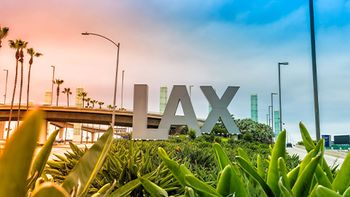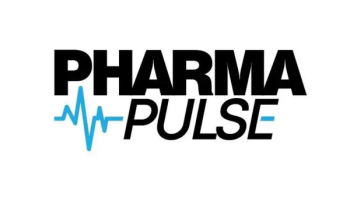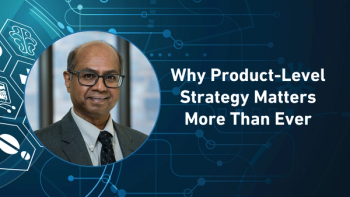
The Twin Forces Shaping Pharma Logistics Sustainability
In the final part of his video interview with Pharma Commerce Editor Nicholas Saraceno, Nate Chenenko, principal with Ducker Carlisle, explains that as regulatory frameworks tighten across Europe and the United States, and customer preferences lean greener, pharma logistics leaders must balance compliance, cost, and innovation to meet mounting sustainability demands.
In a video interview with Pharma Commerce, Nate Chenenko, principal with Ducker Carlisle, sheds light on the critical issue of Scope 3 emissions and their growing relevance in the pharmaceutical industry, particularly across warehousing, packaging, and outbound transportation.
Chenenko defines Scope 3 emissions as all indirect emissions that occur after a pharmaceutical product is manufactured. While many companies focus on the sustainability of raw material sourcing and production (classified as Scope 1 and 2), Scope 3 encompasses everything that follows: storing products in warehouses, packaging them, transporting them to market, and ultimately, their end-of-life disposal. Although these post-manufacturing steps may not seem like the largest contributors to a company’s carbon footprint, they are significant, and frequently overlooked.
What makes Scope 3 emissions particularly challenging for pharma manufacturers is their indirect nature and the reliance on external logistics and supply chain partners. However, Chenenko emphasizes that these areas closely align with the day-to-day operations of supply chain teams, making Scope 3 an accessible and actionable area for emissions reduction. For instance, optimizing packaging materials, choosing greener transportation methods, and reducing energy consumption in warehouses are all tangible ways companies can drive impact.
Importantly, ignoring Scope 3 emissions not only undermines comprehensive sustainability efforts but also excludes a large portion of stakeholders responsible for distribution and logistics. Chenenko argues that targeting Scope 3 emissions allows for faster, more practical sustainability gains than commonly assumed, and presents a strategic opportunity for pharma companies to align environmental goals with operational priorities.
In conclusion, Chenenko advocates for a more holistic sustainability strategy that fully integrates Scope 3 emissions. By engaging supply chain stakeholders and taking action across the post-manufacturing lifecycle, pharmaceutical companies can make meaningful progress toward their environmental goals while enhancing overall supply chain efficiency.
He also comments on the specific metrics can pharma companies realistically track today to measure distribution-related sustainability performance; how manufacturers can overcome the data gaps from suppliers and third parties when aiming for sustainability certifications or ESG reporting compliance; best practices for reducing greenhouse gas emissions across distribution channels without disrupting supply chain efficiency;how regulatory expectations and customer pressure will shape sustainability efforts in pharma logistics in the future; and much more.
A transcript of his conversation with PC can be found below.
PC: How do you see regulatory expectations and customer pressure shaping sustainability efforts in pharma logistics over the next three to five years?
Chenenko: The sustainability regulations, requirements, changes, are not unique to pharma logistics, and the reason that's good is because it's not just your industry—it's the industry of supply chain. It's really important to look at this on a geographic basis. In Europe, they're really not pausing. They're pressing towards more regulation, more control, more reporting. All of that is a good thing for sustainability, and can be maybe a bit of a short-term headache, but will have long-term benefits. In the US, i's hard to see at the moment, in July 2025, there being less regulation in the future than there is today on this sort of thing, so we assume US regulations will get more stringent in the future. That's at a national level in the US, or at a Europe-wide level, but if course, there's exceptions.
In the US, let's focus on those exceptions. The big one right now is the EPR requirements, the extended producer responsibilities that are related to packaging in particular, and they're run at the state level. Some states—California, Colorado—are really far ahead on this, and other states will probably follow that trend. That has been very disruptive for a lot of our clients, and has really moved from high-minded sustainability strategy into how do we comply with these specific requirements in this one state, knowing that they might be similar, but a little bit different in a neighboring state or a state in a different time zone.
The overarching driver of this is that customers prefer sustainability. They may not want to pay an extra 10%, 20% on the product, but if given the option for minimal price difference or no price difference, they would rather work with a sustainable company, and in particular, younger customers, who are your customers of the future that prefer sustainability.
I think a good example of this is Amazon's hassle-free packaging where, instead of shipping in a plastic clam shell, they'll ship in cardboard. People aren't buying that because it's sustainable, but it is a lot more sustainable than that plastic clamshell packaging; it's less packaging, it's more recyclable, it's easier to get into, and people prefer it. If we're willing to be a little bit creative and incorporate some business realities like we still have to be profitable here, I think there's a lot that we can unlock on sustainability, whether the pressure is regulatory or not, because the customer pressure is still going to exist and probably get stronger.
Newsletter
Stay ahead in the life sciences industry with Pharmaceutical Commerce, the latest news, trends, and strategies in drug distribution, commercialization, and market access.




